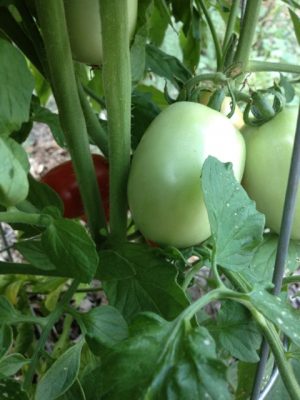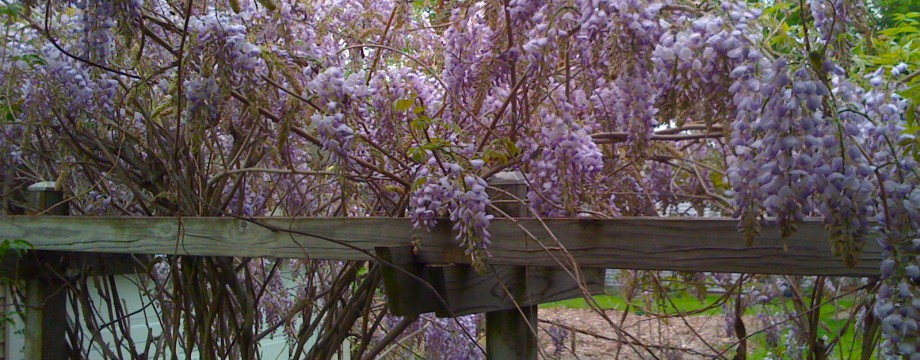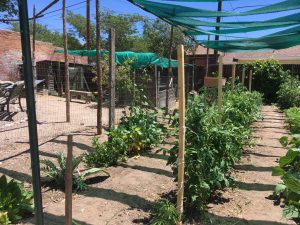
It is likely that I have not achieved the best balance between the vegetative and the generative stages in a tomato’s growth. A growing tomato produces both leaves (vegetative growth) and fruit (generative growth). A big plant with lots of leaves and little fruit is in a primarily vegetative stage. A plant producing a lot of fruit but with a thin stem near the top and flatter and fewer leaves is primarily generative. There are potential problems if the tomato plant is excessively vegetative or excessively generative.
In a vegetative stage, most of the plant’s energy from photosynthesis is directed toward producing leaves and stem, not fruit. A plant that is excessively vegetative may have delayed development of fruit and when fruit does develop, the fruit is small. In a generative stage, the plant’s energy is directed toward reproduction, creating flowers, buds and fruit. If a plant is overly generative, it may stop growing new leaves at the top, consequently slowing or stopping growth, and, in turn, the production of new fruit.
Balancing the two stages is key for healthy plants with a good yield of fruit.
There is quite a bit of information available about balancing the vegetative and generative stages of a greenhouse-grown tomato. A farmer growing tomatoes in a greenhouse has some control over the environment in which they are grown. My tomatoes are outside in my garden and I don’t have as much control over temperature and humidity. But I still can apply some of the principles (next year, of course) in my own garden.
- Early on in a tomato’s growth, I want to encourage vegetative growth (leaves and stems). That means giving the plant lots of nutrients (from my compost pile) and making sure the plant gets enough water.
- Then, when I see the first little fruit, I want to begin encouraging generative growth. That means stressing the plant by reducing its water supply and depriving it of extra nutrients.
Maybe, if I remember this sequence of steps next year, I will get better looking plants and a good harvest of tomatoes.
References:
- Steering your tomato plants for optimum growth and yield (University of Illinois Extension)
- Vegetative and generative crop steering (Growing for Market)

